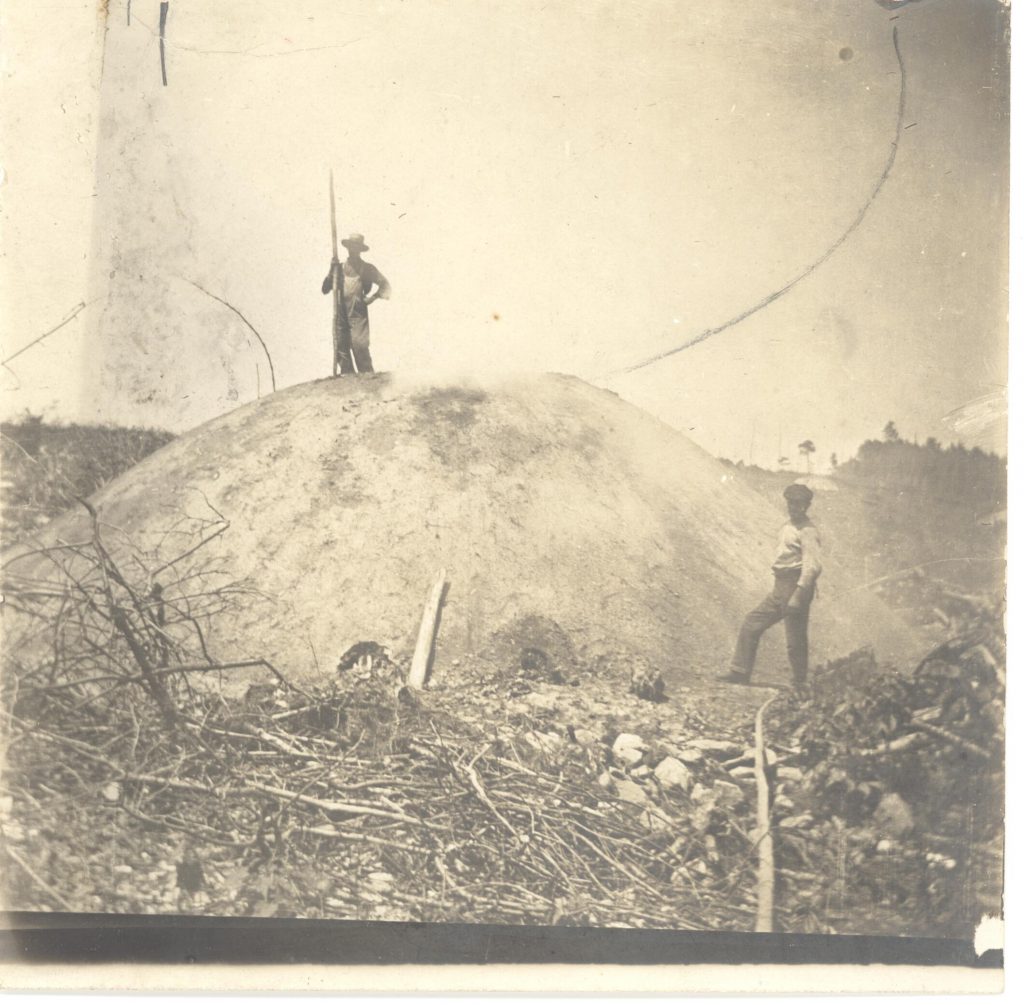Connecticut’s Charcoal Has Stories to Tell, if You Know Where to Look

Colliers would build a ladder on one side of the mound to access upper portions. When jumping the pit, some colliers would hold their shovels parallel to the ground. That way, in case they fell into the hole — the pole would, hopefully, catch.
Collection of Cornwall Historical Society
Although charcoal is now sold at your local supermarket, the unassuming briquette’s story wasn’t always confined to American grills and backyards. For a long time, charcoal was the lifeblood of Connecticut’s iron industry — fueling furnaces creating everything from weapons of war to wheels that rolled across the country.
Relics of Connecticut’s industrial past are scattered all over Connecticut’s forests, but that doesn’t mean finding them is always easy.
“Unfortunately, it’s very subtle — as you can tell, since I’m having a little harder time remembering where this is,” said Emery Gluck, when we met up recently at Whitney Forest in Lebanon. Gluck volunteers there to help manage the space with the Connecticut Forest and Parks Association.
